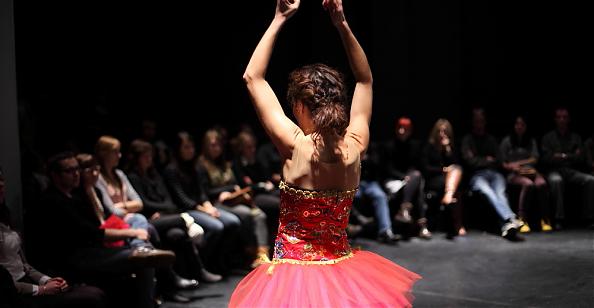
Tercio de varas – ‘lances third’
The matador gets to know the bull, tests him for ferocity and assesses his strengths and weaknesses. He incites the animal and entices him which enables a closer examination of his noble nature. It is believed that the bull needs to be corrected and disciplined into a proper conduct in the following stages.
Then the bull is weakened by the mounted picador consequently losing his innate strength and endurance. The picador tries to ‘improve’ the animal’s bodily imperfections and stubs a lance behind his head ̶ it is the fundamental test to which the bull’s courage and pedigree is put.Tercio de banderillas ̶ ‘banderillas third’
The matador plants the so-called banderillas or rehiletes (short, barbed sticks decorated with colourful paper) in the bull’s shoulders. Constantly moving, banderillas are intended to spur the already exhausted bull into making more ferocious charges.Tercio de muerte ̶ ‘death third’
It is an intimate moment between the matador and the bull, during which the spectators are shown the beauty and the essence of bullfighting. Now, when the matador proved that he knows how to handle the bull he is getting ready to kill the exhausted animal. He makes sure the animal is well-positioned ̶ the act of thrusting the sword will give a clean and quick death only when the front legs are joined. Then he approaches the bull, spreads over his body and cuts the bull’s spinal cord with a sword stabbed between his shoulder blades.‘¡¡¡Ooooolee!!!’ is an expression commonly used to excite and encourage the matador while he’s performing his task. It is a spontaneous exclamation coming from the audience aimed to convey gratitude, passion and consent. Not only does this simple shout reflect the crowd’s enjoyment, but also brings the spectators to the forefront. At this moment the artist’s emotions are in tune with the audience’s feelings and he forgets about all limitations.
In its simplest form ‘¡¡¡Ooooolee!!!’ means yes. However, there are theories which indicate that the expression stems from the Arabic word ‘Allah’ (Alá in Spanish), which would suggest that the exclamation is almost a spiritual blessing bestowed on the event.
EVA RUFO is a Spanish actress, living in Poland since 1997 and since 2006 directing her own shows: Nosotro$ollE, Mujeres-Kobiety, Ja też (...pragnę być Almodowarowską dziewczyną), inspired by the tradition of Cuentacuentos (literally, telling stories). She started dancing when she was 4 years old. She received education from such figures as Jurij Konjar (Slovenia), Claire Heggen and Yves Marc (France), Thomas Prattki (Great Britain), Milan Kozanek (Slovenia), Zygmunt Molik (Grotowski Centre), Olga Szwajger, Jose Luis Raymond (Spain), Atsushi Takenouchi (Japan), Rachel Karfistan (Great Britain). She participated in workshops by blackSKYwhite Theatre (Russia), Nucleo Theatre (Argentine), Odin Teatret (Denmark), Teatr Pieśń Kozła, Teatr Ósmego Dnia and Teatr Porywacze Ciał.
Told by Eva Rufo
Words Agata Cyrklewicz
Movement Martyna Kalkowska
Costumes Cristina Gonzalez
Lights Łukasz Jata
Props Ewa Lewandowska
Translation Agata Cyrklewicz, Bernadeta Szwarc
Languages Spanish and Polish